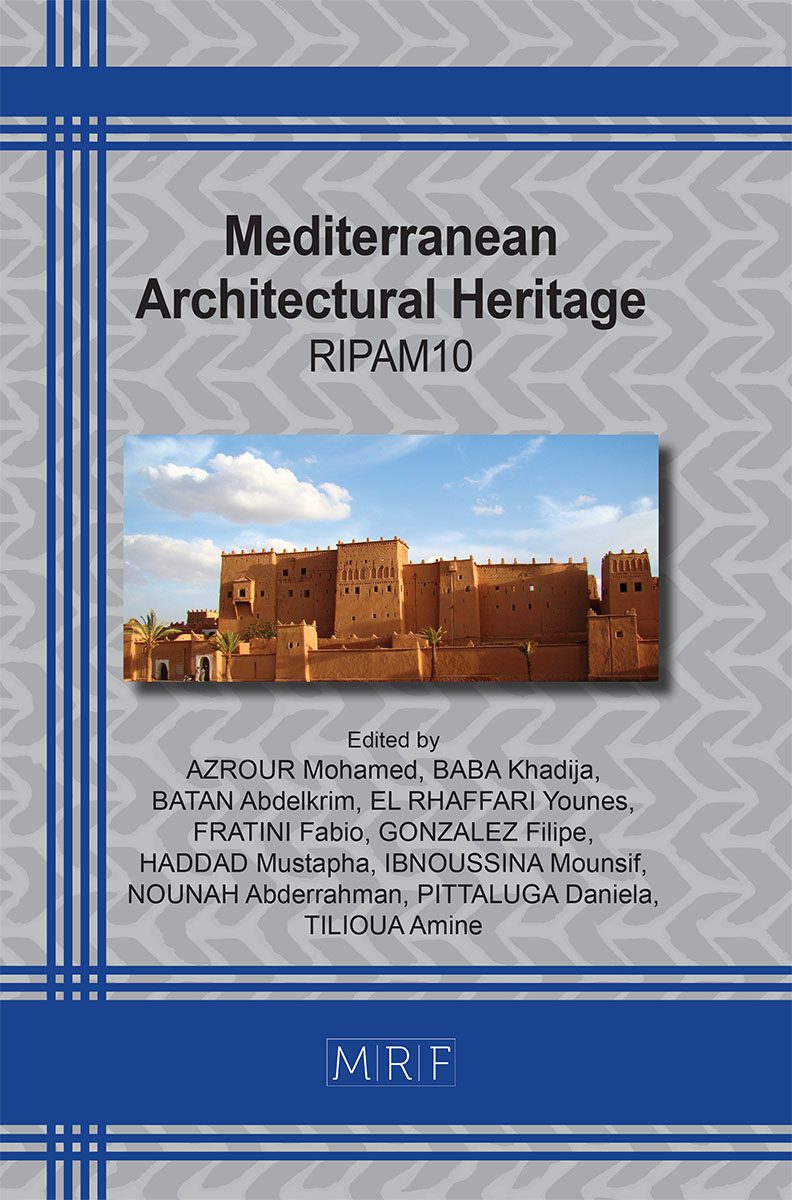Thermal Characterization of a New Bio-Composite Building Material based on Gypsum and Date Palm Fiber
Youssef KHRISSI, Amine TILIOUA, Najma LAAROUSSI
download PDFAbstract. In Morocco, the prevalent use of building materials with low thermal resistance has translated into substantial energy consumption. This has underscored the pressing need to promote the development and adoption of sustainable construction and insulation materials. The primary objective of our study is to enhance the thermal properties of plaster by incorporating date palm fibers (DPF) to create an exterior wall coating. To evaluate the thermal properties of the resulting Gypsum-DPF bio-composite material, we conducted several experimental measurements of thermophysical properties. These measurements encompassed the determination of bulk density and thermal conductivity, which were assessed using the steady-state hot plate method. Our findings reveal that the inclusion of date palm fiber in the material led to a noteworthy reduction in bulk density, amounting to approximately 17.16%. Furthermore, thermal conductivity decreased by approximately 26.24%. These outcomes underscore the potential and value of utilizing this bio-composite material in building construction to enhance thermal comfort and, critically, contribute to a reduction in greenhouse gas emissions, particularly CO2 emissions.
Keywords
Building Materials, Gypsum-DPF, Hot Plate Method, Bulk Density, Thermal Conductivity
Published online 3/15/2024, 9 pages
Copyright © 2024 by the author(s)
Published under license by Materials Research Forum LLC., Millersville PA, USA
Citation: Youssef KHRISSI, Amine TILIOUA, Najma LAAROUSSI, Thermal Characterization of a New Bio-Composite Building Material based on Gypsum and Date Palm Fiber, Materials Research Proceedings, Vol. 40, pp 55-63, 2024
DOI: https://doi.org/10.21741/9781644903117-6
The article was published as article 6 of the book Mediterranean Architectural Heritage
![]() Content from this work may be used under the terms of the Creative Commons Attribution 3.0 license. Any further distribution of this work must maintain attribution to the author(s) and the title of the work, journal citation and DOI.
Content from this work may be used under the terms of the Creative Commons Attribution 3.0 license. Any further distribution of this work must maintain attribution to the author(s) and the title of the work, journal citation and DOI.
References
[1] M. Ouakarrouch, N. Laaroussi and M. Garoum, Thermal characterization of a new bio-composite building material based on plaster and chicken feather waste,J. Renewable Energy and Environmental Sustainability 5 (2020) 2. https://doi.org/10.1051/rees/2019011
[2] A.KHABBAZI and J. KETTAR, Thermal and Mechanical Behavior of the Plaster Reinforced by Fiber Alpha or Granular Cork, J. Civil Engineering and Technology, (2017)1026-1040.
[3] F Hernández-Olivares., Ignacio Oteiza and Luis de Villanueva,Experimental analysis of the toughness and increase in modulus of rupture of gypsum hemihydrate reinforced with short sisal fibers,J.Composite structures 22.3(1992)123-137.https://doi.org/10.1016/0263-8223(92)90001-S
[4] B.Mazhoud, F.Collet, S.Pretot, J.Chamoin, Hygric and thermal properties of hemp-lime plasters,J. Build Environ, 96(2016)206–16. https://doi.org/10.1016/j.buildenv.2015.11.013.
[5] B.Mazhoud, F.Collet ,S. Pretot , C.Lanos,Development and hygric and thermal characterization of hemp-clay composite, J. Environ Civ Eng (2018)8189:0. https://doi.org/10.1080/19648189.2017.1327894
[6] S Amziane, L Arnaud. Bio-aggregate-based Building Materials. 2013.
[7] N Benmansour, B Agoudjil, Gherabli A, Kareche A, Boudenne A, Thermal and mechanical performance of natural mortar reinforced with date palm fibers for use as insulating materials in building,J. Energy Build 81(2014)98–104. https://doi.org/10.1016/j.enbuild.2014.05.032
[8] A Kriker, G Debicki, A Bali, Khenfer MM, Chabannet M, Mechanical properties of date palm fibres and concrete reinforced with date palm fibres in hot-dry climate,J. Cem Concr Compos 27(2005)554–564. https://doi.org/10.1016/j.cemconcomp.2004.09.015
[9] W. GALLALA, H.M.M. KHATER, production of low-cost biocomposite made of palm fibers waste and gypsum plaster, J.Int. Contam. Ambie36, 2(2020)475-483.
https://doi.org/10.20937/rica.53541
[10] I. Boulaoued, I.Amara,A.Mhimid, Experimental Determination of Thermal Conductivity and Diffusivity of New Building Insulating Materials, J. heat and technology34,2(2016) 325-331. 10.18280/ijht.340224
[11] A.M. ALmusawi, T.S. Hussein, M.A. Shallal, Effect of Temperature and Sisal Fiber Content on the Properties of Plaster of Paris,J.Engineering & Technology7(2018)205-208.
[12] F.Naiiri, L.Allegue, M.Salem, R.Zitoune, M.Zidi, The effect of doum palm fibers on the mechanical and thermal properties of gypsum mortar, J .Composite Materials (2019)1–19. https://doi.org/10.1177/0021998319838319
[13] A. Djoudi, M. M. Khenfer, A. Bali, T. Bouziani, Effect of the addition of date palm fibers on thermal properties of plaster concrete: experimental study and modeling, J. Adhesion Science and Technology28,20(2014)2100-2111. https://doi.org/10.1080/01694243.2014.948363
[14] F. Naiiri, A.Lamis, S.Mehdi, The effect of doum palm fibers on the mechanical and thermal properties of gypsum mortar,J. Composite Materials 53.19 (2019)2641-2659. https://doi.org/10.1177/0021998319838319
[15] S. Bousshine, M. Ouakarrouch, A. Bybi, N. Laaroussi, M. Garoum, A. Tilioua, Acoustical and thermal characterization of sustainable materials derived from vegetable, agricultural, and animal fibers,J. Applied Acoustics 187 (2022) 108520. https://doi.org/10.1016/j.apacoust.2021.108520
[16] M. Rachedi, A. Kriker, Optimal composition of plaster mortar reinforced with palm fibers, J. Civil Eng Environ Sci 4(2018) 44-49. https://doi.org/10.17352/2455-488X.000027
[17] A. Achour, F. Ghomari, N. Belayachi, Properties of cementitious mortars reinforced with natural fibers, J.Adhesion Science and Technology 10 (2017)1–25. https://doi.org/10.1080/01694243.2017.1290572
[18] Y. Jannot, A. Degiovanni, Thermal properties measurement of materials, ISTE edn. (John Wiley & Sons, New Jersey, 2018)































